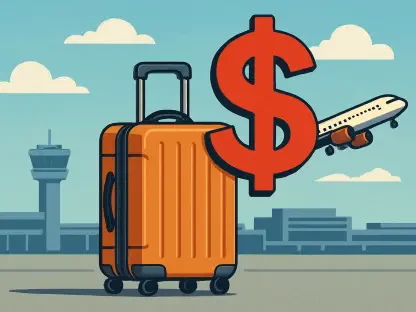Allow me to introduce Katarina Railko, a seasoned hospitality expert with a deep-rooted passion for travel and tourism. With years of experience in the industry, Katarina has honed her expertise in wellness tourism, entertainment, and event management, often lending her insights at expos and conferences. Today, we’re diving into the thriving wellness industry in Thailand, exploring its remarkable growth, unique appeal, future prospects, and the challenges it faces. Our conversation uncovers what makes Thailand a global leader in wellness tourism and how it continues to evolve to meet the needs of health-conscious travelers.
How has Thailand’s wellness industry evolved in recent years, and what’s driving its impressive value of over 670 billion baht?
Thailand’s wellness industry has seen incredible growth, reaching a value of over 670 billion baht in 2025, which reflects its rising prominence on the global stage. A major driver behind this is the increasing demand for health-focused travel, where people are seeking experiences that rejuvenate both body and mind. The country has capitalized on its reputation for traditional practices like Thai massage, combined with modern wellness offerings. Additionally, government support through tourism initiatives has helped boost the sector, while the sheer number of wellness businesses—nearly 93,000 now—shows how deeply embedded this industry is in Thailand’s economy.
What unique elements make Thailand a standout destination for wellness tourism worldwide?
Thailand stands out because it offers a perfect blend of cultural heritage and natural beauty. Traditional Thai massage, yoga retreats, and holistic therapies are huge draws for international visitors looking for authentic experiences. Beyond that, the country’s landscapes—think serene beaches in Phuket or tranquil mountains in Chiang Mai—create an ideal setting for relaxation and healing. It’s not just about the services; it’s the whole environment that makes people feel restored, which is hard to replicate elsewhere.
Could you walk us through the key components of Thailand’s wellness tourism market and how they work together?
The wellness tourism market in Thailand operates on two main levels: direct and indirect services. Direct providers, like hospitals, clinics, and spas, are the core, with about 28,000 businesses generating 220 billion baht in revenue. These are the places tourists visit for treatments or wellness experiences. Then you have indirect businesses—around 65,000 of them—such as retail, transport, and other tourism services, contributing roughly 450 billion baht. These support the ecosystem by making travel seamless and enhancing the overall visitor experience, ensuring wellness tourists have everything they need.
What do you see as the most promising areas for growth in Thailand’s wellness sector over the next few years?
Looking ahead, I’m particularly excited about segments like hotels and resorts that are increasingly focusing on wellness packages. There’s also huge potential in medical tourism, with health checkups and treatments drawing more visitors. Food services catering to health-conscious travelers and even air transport tailored for wellness-focused trips are set to expand. Thailand is strategically positioning itself as a global wellness hub by investing in these areas, and I think we’ll see significant growth as more tourists prioritize health in their travel plans.
When wellness tourists come to Thailand, what are they typically hoping to experience?
Wellness tourists are often looking for a mix of relaxation and rejuvenation. Spa treatments, especially oil and foot massages, are incredibly popular, rooted in Thai traditions. But there’s also a growing interest in holistic experiences like detox programs, yoga, and full wellness retreats. Many visitors want to improve both their physical and mental well-being, and Thailand offers this through personalized therapies, beauty treatments, and the chance to unwind in stunning natural settings. It’s about leaving feeling better than when you arrived.
What are some of the hurdles the wellness industry in Thailand is currently facing?
Despite its growth, the industry isn’t without challenges. Recently, there’s been a slight slowdown in tourist arrivals, especially noticeable in the second and third quarters of the year, which has impacted revenue in some sectors. Negative media sentiment and external factors have also played a role in dampening visitor numbers. It’s a complex issue, but the industry is actively working on rebuilding confidence through improved marketing and ensuring high safety and quality standards to reassure travelers.
How is the industry gearing up for a rebound during the peak tourist season?
There’s a lot of optimism for the high season, which typically brings a surge of international visitors. Major players in the wellness space are stepping up with strategies to elevate Thailand’s global ranking as a wellness destination. This includes targeted marketing campaigns to highlight unique offerings and forging partnerships to attract more travelers. There’s also a focus on enhancing visitor experiences, ensuring that everything from booking to on-site services meets the expectations of discerning wellness tourists. It’s all about making a strong comeback.
What is your forecast for the future of wellness tourism in Thailand over the next decade?
I’m very bullish on the future of wellness tourism in Thailand. With the global trend toward health and self-care only gaining momentum, I believe Thailand will solidify its position as a top-tier destination. We’ll likely see even more innovation in services, from eco-resorts in rural areas to advanced medical tourism offerings. The key will be balancing growth with sustainability, ensuring that local communities continue to benefit while maintaining the authenticity of Thailand’s wellness culture. I think the next decade will be transformative, with Thailand leading the way in redefining what wellness travel can be.









